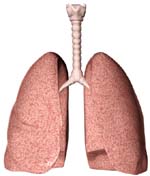Malignant Pleural Mesothelioma: Symptoms, Causes,
and Diagnosis

Malignant pleural mesothelioma is a rare cancer that develops in the tissues that comprise the lining of a lung (pleura). The majority of individuals who develop malignant pleural mesothelioma have experienced chronic exposure to asbestos during the course of their lives.
“The average age of onset is sixty and the latent period between exposure to asbestos and development of mesothelioma can be up to forty years,” says Dr. Warwick Carter in his book The Complete Family Medical Guide. “It has a very insidious onset, with symptoms little different to asbestosis itself.”
The early symptoms of mesothelioma are generally non-specific, and may lead to a delay in diagnosis, according to the website Mesotheliomaweb.org. “Sometimes resembling viral pneumonia, pleural mesothelioma patients may present with shortness of breath, chest pain and/or persistent cough; some patients show no symptoms at all. A chest x-ray may show a build-up of fluid or pleural effusion. . . The right lung is affected 60% of the time, with involvement of both lungs being seen in approximately 5% of patients at the time of diagnosis. Less common symptoms of pleural mesothelioma include fever, night sweats and weight loss.”
“X-ray changes may not be apparent until the disease is quite advanced,” says Dr. Carter, “and CT scans are more useful in making the diagnosis in suspicious cases. A biopsy of the cancerous area is the only way to make a definite diagnosis.”
Treatment with surgery, drugs and radiation has been tried, but with virtually no success as the cancer is extremely virulent and spreads rapidly. Three quarters of malignant pleural mesothelioma victims die within a year of the diagnosis, and 98% within two years.
|
